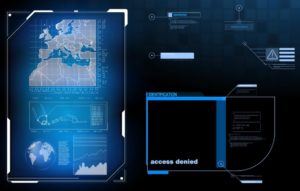
Lawful Intelligence Measures for Counterterrorism
Preventing terrorism and mass casualties in the absence of full data visibility requires identifying and combining digital breadcrumbs that reveal clues and generate evidence.
Protection of accuracy, fairness, and transparency must be demonstrated if AI-touched material influences investigative decisions or prosecutorial judgments.
Reflecting on the past and looking towards our future, SS8 thanks our customers, community, and employees for a successful 25 years that sets the stage for an unlimited future of value-driven lawful intelligence.
Criminal organizations commit substantial financial crime at international border crossings, either connected to or independent of higher-profile violations such as smuggling and human trafficking.
Law enforcement agencies (LEAs) all over the world face intensifying personnel shortages. Most are unable to meet recruitment targets or even to compensate for ongoing retirements with new hires.
With 5G deployments ongoing and 6G some years away, 3GPP Release 18 provides an evolutionary step forward with the first 5G Advanced (5.5G) standard, enhancing performance, efficiency, and flexibility.

Preventing terrorism and mass casualties in the absence of full data visibility requires identifying and combining digital breadcrumbs that reveal clues and generate evidence.

Throughout the history of the internet, users have sought ways to conceal what they do online, primarily to safeguard their privacy from prying eyes. Over

As communication service providers (CSPs) implement sophisticated location technologies to comply with regulatory obligations, many are investigating associated revenue opportunities to help recover costs. Passive

The growing complexity of the digital world has been driving the evolution from lawful interception to lawful intelligence for many years. This transition reflects massive

As criminal activity spreads from the real world to cyberspace and now to virtual worlds, protecting the integrity of digital evidence has become even more

The ability to ingest and analyze an unlimited range of data sources is a key requirement for a modern lawful intelligence practice. The data may

Regulators have required geographic redundancy for the network resources operated by communication service providers (CSPs) for some time but meeting this mandate has become more

While lawful interception is often thought to have begun with wiretapping, pen registers actually predate that practice and telephones themselves, having been developed during the

National border crossings provide unique touchpoints for lawful intelligence operations. Controls at a country’s points of ingress and egress require travelers to present identification, submit

Generally, people have a greater expectation of privacy at home than in public, and rightfully so. Regulatory measures such as search warrants protect those expectations
THE DATA SILO DILEMMA FOR LAW ENFORCEMENT
How to Ingest, Filter and Query 5G Volumes
Webinar Presented by Kevin McTiernan